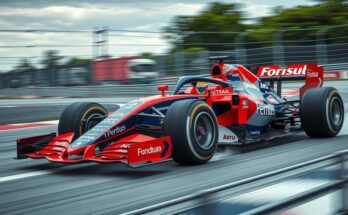Tesla’s anticipated entry into the Indian market faces delays, with the Model 3 still unavailable nearly nine years after initial interest. While Tesla is making efforts to establish itself with hiring and showrooms, the domestic EV landscape has evolved significantly. Competitors have emerged, resulting in a diminished technological edge for Tesla. The success of Tesla in India hinges on addressing market candidacies, pricing strategies, and infrastructure development.
Tesla’s aspirations in India have been long-anticipated, with local investors expressing their eagerness by placing significant deposits for its vehicles. However, a considerable delay has left many reservations unfulfilled, as the Model 3 remains unavailable almost nine years after initial interest was generated. The automotive landscape has evolved, with various other electric vehicles (EVs) becoming available, which may overshadow Tesla’s traditional appeal.
Tesla is reportedly making concrete moves to establish a presence in India, including a public hiring event in Mumbai and securing showroom spaces in major cities. The company is also in the process of homologating its Model Y and Model 3 for compliance with local regulations. Although EV sales in India make up less than 3% of the market, there has been noteworthy growth, suggesting a potential opportunity for Tesla.
Industry experts indicate that the optimal window for Tesla’s entry might have been a few years earlier, as competitive alternatives have emerged in the Indian EV market. The technological advantages that Tesla once held have diminished, with local manufacturers gaining acclaim for their innovations. India’s transport minister has voiced confidence in the local automotive industry’s ability to rival Tesla’s offerings.
Despite the foundational developments, Tesla faces hurdles, particularly regarding its direct sales model in a dealer-dominated market and the critical element of aftersales service. The price point of Tesla vehicles presents another challenge, as most Indian consumers seek vehicles below ₹20 lakh, whereas the anticipated price of the Model 3 places it within the luxury category.
To overcome these challenges, Tesla may consider cost-effective strategies for manufacturing in India. Initial reports suggest that contract manufacturing may be an avenue Tesla is exploring. Setting up its own gigafactories could be a viable option, given the lower costs in India compared to Western markets. States are competing to attract Tesla by offering incentives, enhancing their appeal as potential manufacturing sites.
Charging infrastructure remains a significant concern, as range anxiety persists among potential EV buyers. However, the expanding network of charging stations may alleviate this issue. Tesla’s supercharger deployment will require significant investment, although the company can also utilize public charging solutions in the interim.
For Tesla to successfully penetrate the Indian market, it must commit to substantive investments in manufacturing, innovative pricing strategies, and an extensive value proposition. The prolonged wait for Tesla’s presence in India might have diminished excitement, necessitating a more decisive and comprehensive approach to build consumer confidence.
In conclusion, while Tesla has made strides toward entering the Indian market, its delayed entry may pose challenges amid evolving consumer preferences and competitive offerings. Significant hurdles like pricing strategy, manufacturing efficiency, and establishing robust infrastructural support remain. For Tesla to establish a successful foundation, it will need to engage fully with the market demands, ensuring its product offerings align with consumer expectations and local constraints.
Original Source: m.economictimes.com




